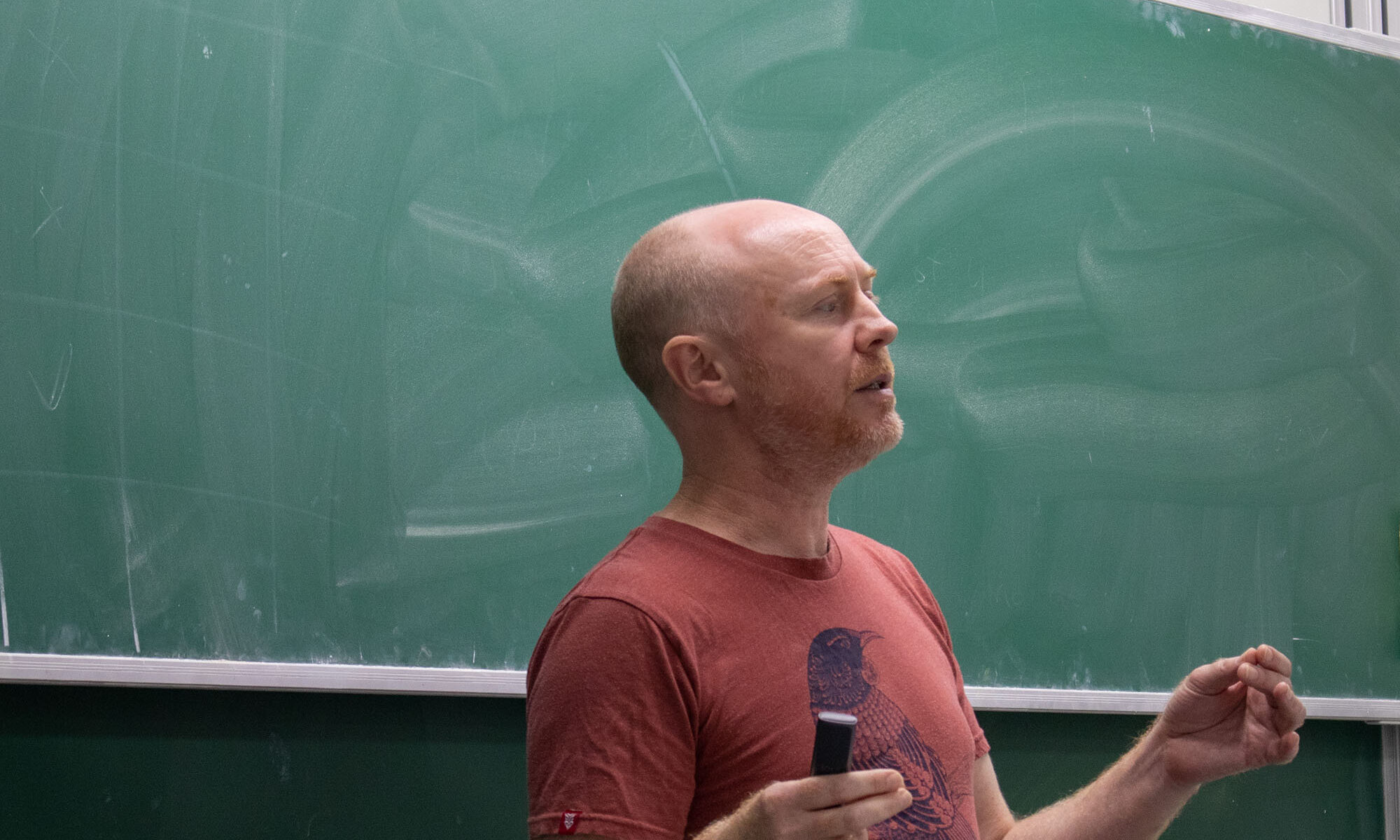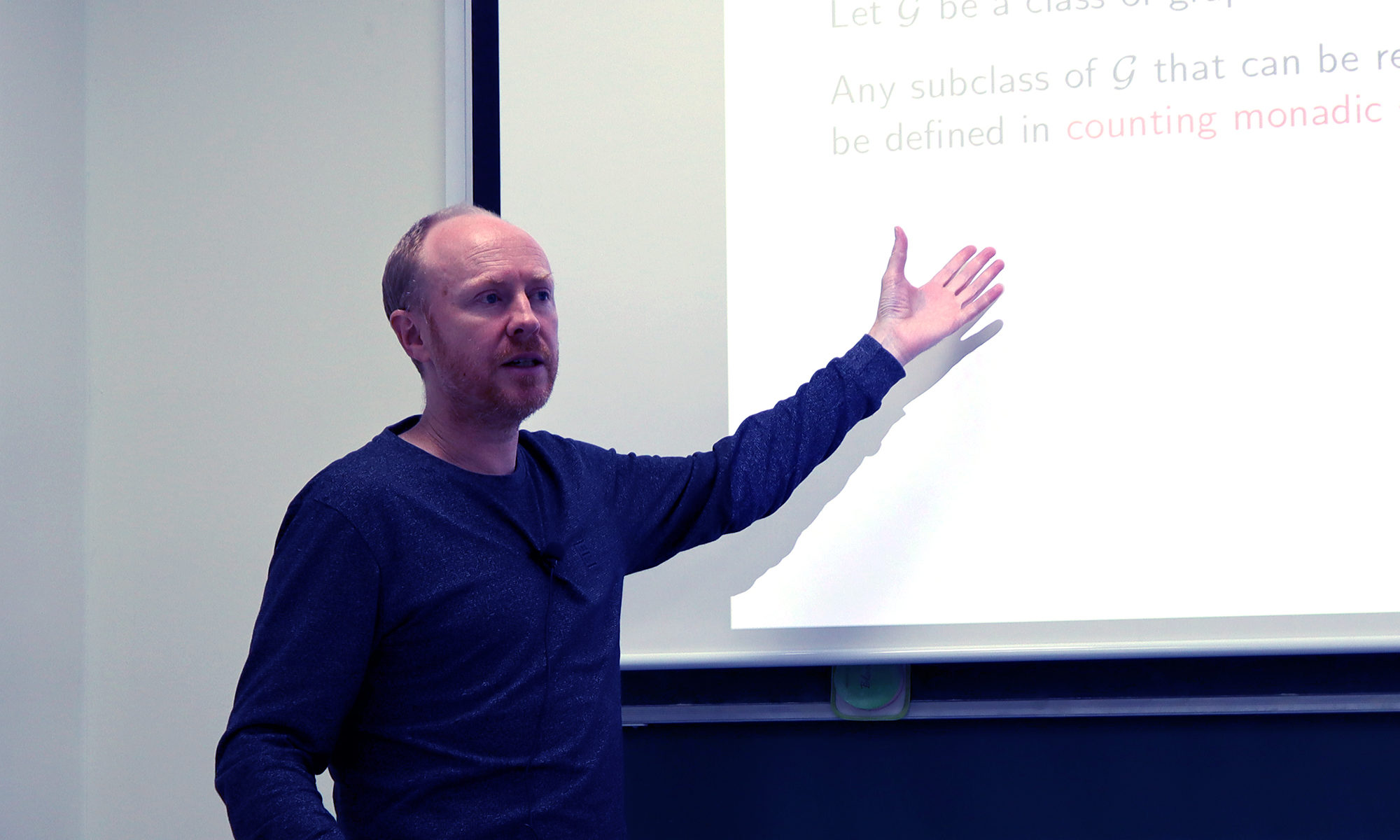On August 27, 2024, Dillon Mayhew from the University of Leeds gave a talk at the Discrete Math Seminar on the monadic second-order definability of gain-graphic matroids. The title of his talk was “Monadic second-order definability for gain-graphic matroids“.
Dillon Mayhew, Monadic second-order definability for gain-graphic matroids
Every (finite) matroid consists of a (finite) set called the ground set, and a collection of distinguished subsets called the independent sets. A classic example arises when the ground set is a finite set of vectors from a vector space, and the independent subsets are exactly the subsets that are linearly independent. Any such matroid is said to be representable. We can think of a representable matroid as being a geometrical configuration where the points have been given coordinates from a field. Another important class arises when the points are given coordinates from a group. Such a class is said to be gain-graphic.
Monadic second-order logic is a natural language for matroid applications. In this language we are able to quantify only over subsets of the ground set. The importance of monadic second-order logic comes from its connections to the theory of computation, as exemplified by Courcelle’s Theorem. This theorem provides polynomial-time algorithms for recognising properties defined in monadic second-order logic (as long as we impose a bound on the structural complexity of the input objects). It is natural to ask which classes of matroids can be defined by sentences in monadic second-order logic. When the class consists of the matroids that are coordinatized by a field we have a complete answer to this question. When the class is coordinatized by a group the problem becomes much harder.
This talk will contain a brief introduction to matroids. Based on work with Sapir Ben-Shahar, Matt Conder, Daryl Funk, Angus Matthews, Mike Newman, and Gabriel Verret.
Dillon Mayhew gave a talk on analogues of Courcelle’s theorem, in particular to hypergraphs and matroids at the discrete math seminar
On January 28, 2020, Dillon Mayhew from Victoria University of Wellington, New Zealand gave a talk on problems and results motivated by Courcelle’s theorem, with an emphasis on hypergraphs and matroids. The title of his talk is “Courcelle’s Theorem for hypergraphs“.
Dillon Mayhew, Courcelle’s Theorem for hypergraphs
Courcelle’s Theorem is an influential meta-theorem published in 1990. It tells us that a property of graph can be tested in polynomial time, as long as the property can expressed in the monadic second-order logic of graphs, and as long as the input is restricted to a class of graphs with bounded tree-width. There are several properties that are NP-complete in general, but which can be expressed in monadic logic (3-colourability, Hamiltonicity…), so Courcelle’s Theorem implies that these difficult properties can be tested in polynomial time when the structural complexity of the input is limited.
Matroids can be considered as a special class of hypergraphs. Any finite set of vectors over a field leads to a matroid, and such a matroid is said to be representable over that field. Hlineny produced a matroid analogue of Courcelle’s Theorem for input classes with bounded branch-width that are representable over a finite field.
We have now identified the structural properties of hypergraph classes that allow a proof of Hliněný’s Theorem to go through. This means that we are able to extend his theorem to several other natural classes of matroids.
This talk will contain an introduction to matroids, monadic logic, and tree-automata.
This is joint work with Daryl Funk, Mike Newman, and Geoff Whittle.



